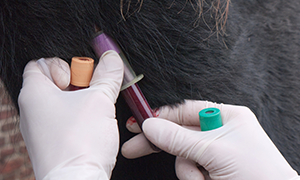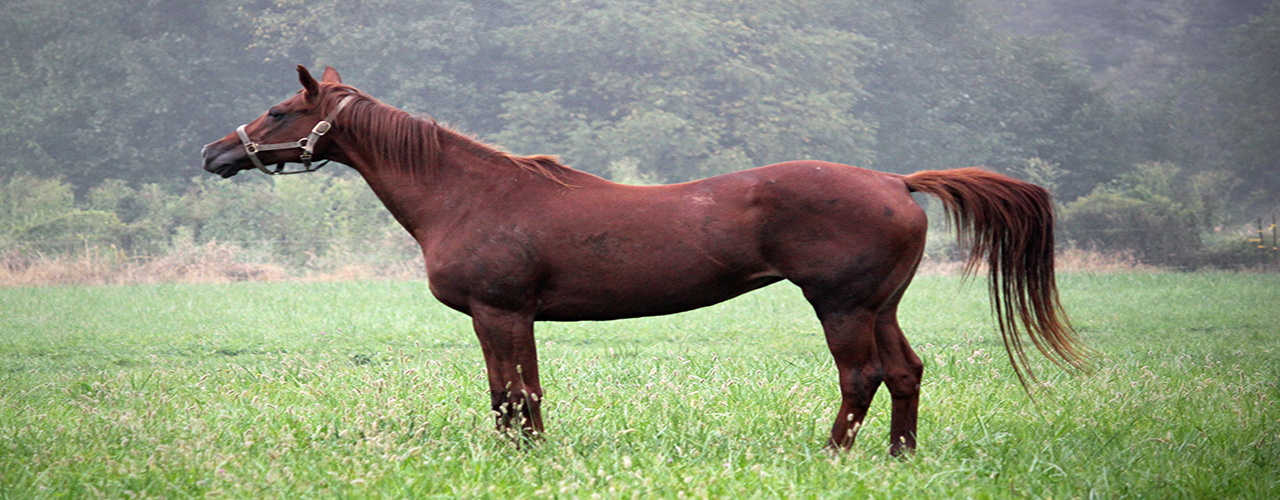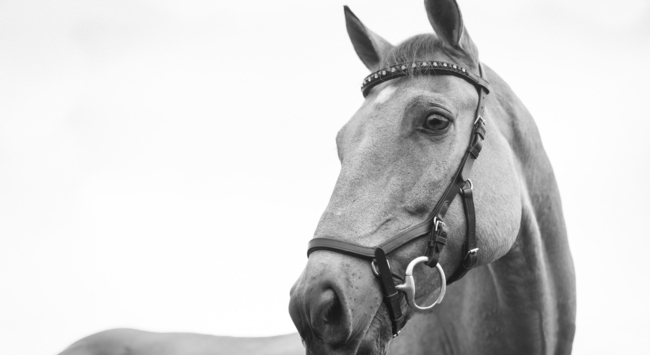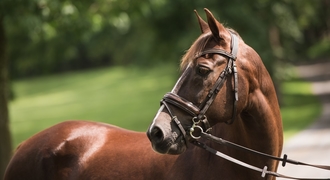Tell Tails
By Wendy Talbot on 14 February 2020
Tell Tails
Thick and lustrous, long and flowing, or fine and wispy and soft as silk, your horse’s tail is not just a spectacular fly swat, it’s also a means of communication and can signal your horse’s mood.
Tail structure
Like dog and cat tails, your horse’s dock – which is the bony part of the tail - is actually part of the spinal column. It contains vertebrae that become progressively smaller as they reach the tip. The number of vertebrae varies from horse to horse but on average there are around 18. Muscle fibres in and around the tail enable your horse to lift and move it from side to side.
Those beautiful strands of hair on your horse’s tail are simply an extra thick and much longer version of the hair on your horse’s body. They are formed from hardened protein with a protective outer coating called the cuticle. Most tails have straight hair but genetics may give some horses wavy tresses. In the extreme the Bashkir Curly horse, as its name suggests, is adorned with a full coat of curls.
Tail talk
A high, swishing, twitching or clamped horse’s tail indicates his emotional and physical state, giving him a means of communication with other horses and with humans.
A mare in season will lift her tail up and sideways, suggesting she is ready to reproduce but an in-foal mare will warn a stallion away with a hunched rump, a hostile swish and perhaps a threatening hind leg. A slightly raised tail, coupled with an alert stance can be a warning sign that the horse has spotted potential danger, while a tail held high is usually a sign of playfulness, pride and excitement. At the other extreme a clamped tail can show subordination, anxiety, frustration or discomfort.
For riders, tail activity can be a great indicator of your horse’s physical and emotional state; a relaxed swinging tail will usually reflect a relaxed, comfortable horse while a tense, swishing tail may suggest the horse is unhappy or uncomfortable with what he is being asked to do. The clamped tail and clenched hindquarters of a horse being worked may be a sign that a big buck or a kick is coming and could also be an indication of discomfort or pain. Clamping or clenching in a horse standing still and not interacting with other horses may also be pain-related.
Tail care
Regular grooming will keep your horse’s tail in tiptop condition but try not to wash the whole tail too often as it will spoil the natural oils that protect the hair and keep it shiny. A mane and tail conditioner or some baby oil can help to keep it tangle-free and stop mud from sticking when you are combing. Always use a proper tail comb or your fingers for detangling rather than a plastic curry comb which can damage the hairs.
Did you know?
- Working draft horses sometimes have their tails cut or plaited and tied up short to prevent them getting caught in the driving harness or reins.
- Andalusian and Friesian horses are known for their long and luxurious tails
- It’s said that Apaloosa horses were selectively bred for short sparse tails by the Nez Perce Indians to prevent the tails becoming caught on brush when they were hunting
References
King S. What your horse’s tail tells you
https://equusmagazine.com/horse-care/horsetail_062206
Accessed 31 December 2019
Meggit J. Why do some appaloosas have short tails
https://animals.mom.me/appaloosas-short-tails-9292.html
Accessed 31 December 2019
MM-07953
Comments
DR WENDY TALBOT BVSC CERT EM (INT MED) DECEIM MRCVS
Wendy graduated from Bristol University in 1999. She then went on to complete a residency at Liverpool University and holds a European Diploma in Equine Internal Medicine. After working in practice for 13 years, she joined Zoetis in 2012 as the National Equine Veterinary Manager.




